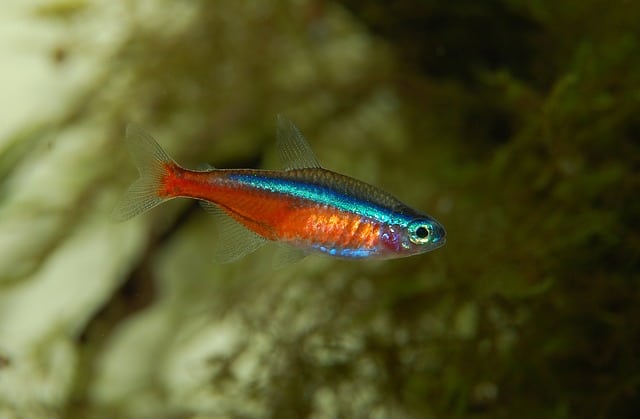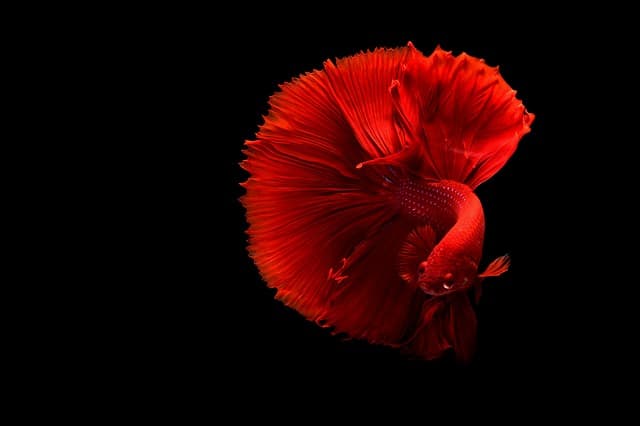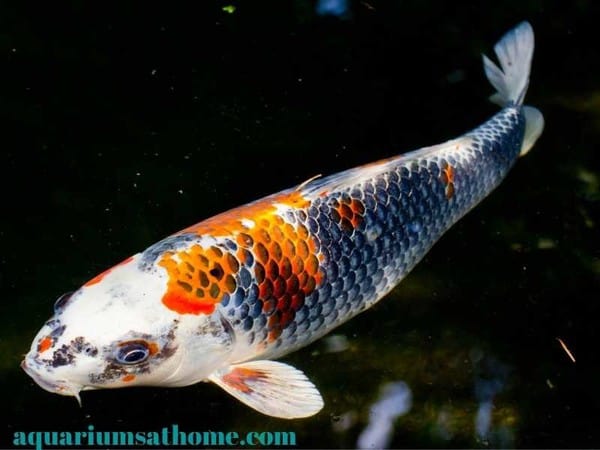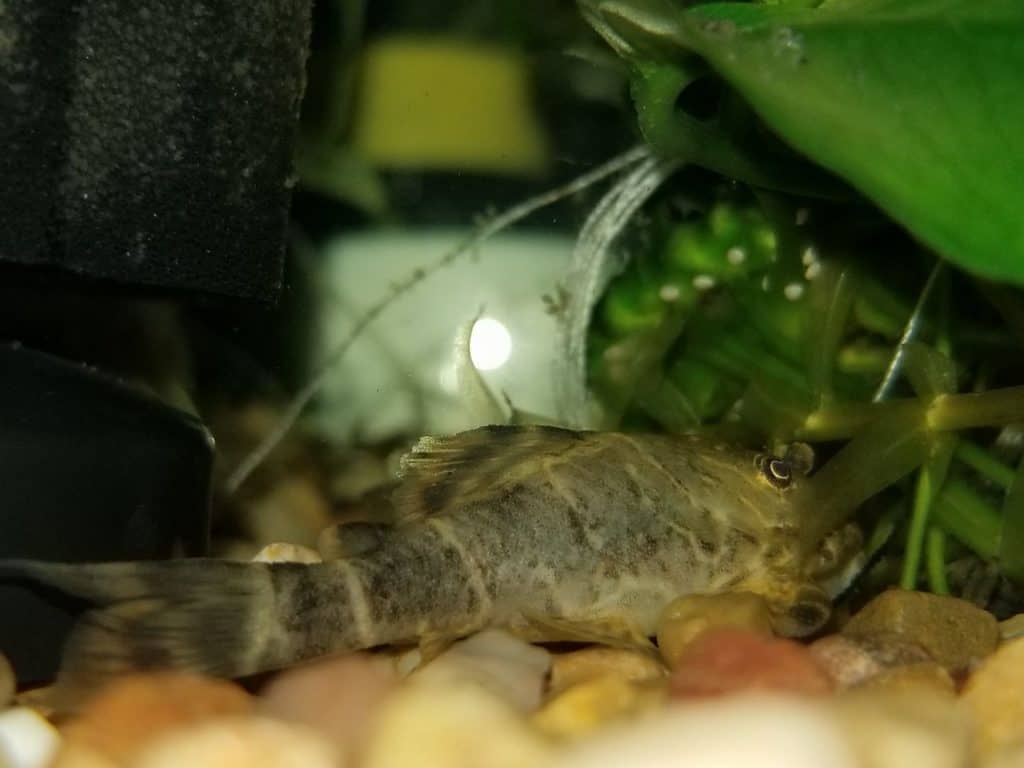As an aquarium enthusiast, you’re bound to come across snail eggs in your fish tank. Whether you’re an experienced aquarist or a beginner hobbyist, you need to act quickly to prevent snails from ‘taking over’ your aquarium. This begs the question, ‘what should I do with snail eggs in my freshwater tank?’
There are 3 things you can do with snail eggs in a freshwater aquarium: allow them to hatch and keep them, use them to feed fish, or dispose of them. What you end up doing will ultimately depend upon the size of your tank, the types of fish you have, and your needs an aquarist.
Now that know your options regarding snail eggs in your fish tank, let’s explore this topic in more detail. Together we’ll learn what snail eggs look, where to find them, and what to do with them. We’ll also discover why they can be good for an aquarium and what causes them to overrun a fish tank.
So, if you’re ready to learn more about the implications of snails (and their eggs) in a freshwater tank, then let’s begin!
What do Snail Eggs Look Like?
Snail eggs vary in appearance, depending on the species that lays them! In most cases, they look like a cluster of round translucent objects with a jelly-like texture. They can range in color from white to blue to pink. When fertilized, you’ll notice little brown or black flecks inside them which continue to darken as the embryo develops.
How Many Eggs do Snails Lay at a Time?
A snail can lay hundreds of eggs in a single breeding season. However, only a small number of fertilized eggs will survive and hatch – somewhere between 20 and 80, on average. The conditions in the tank (including the water temperature and pH level as well the numbers and types of fish inhabitants) play a major role in the duration and success of incubation.
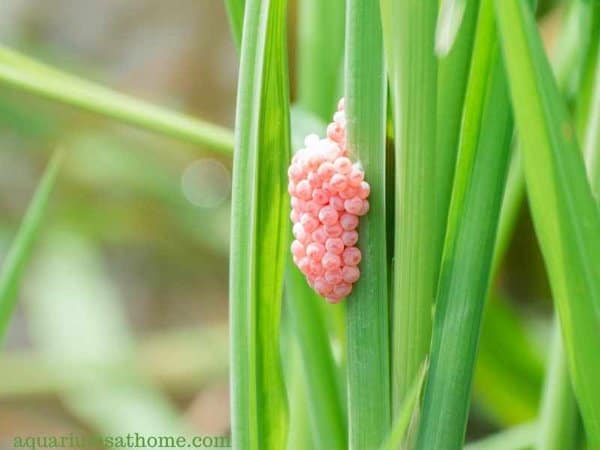
How Long does it Take for Snail Eggs to Hatch?
Typically, it takes fertilized snail eggs 2 to 4 weeks to hatch after being laid, depending on the species and the conditions in the tank. If the water in the tank is warmer, eggs will often hatch faster. As well, if you have carnivorous fish inhabiting the aquarium, you’ll likely have fewer eggs and/or hatchlings. Some snail eggs can take up to 8 months to incubate, but that’s a rarity.
Where do Snails Lay their Eggs in an Aquarium?
Snails deposit their eggs in different places inside an aquarium. Typically, they’ll adhere to vegetation, rocks, driftwood, and other decorations. You may also find them stuck to the walls of the tank. Large, dense greenery or ‘hidden areas’ seem to be a snail’s preference for egg-laying in captivity – though it’s not uncommon to find them attached to artificial or floating plants as well.
Are Snail Eggs a Good Thing in an Aquarium?
Snails can be beneficial to a freshwater aquarium. They help keep the tank clean by feasting on excess algae, leftover food, and even waste material that can otherwise lead to a toxic environment, if not properly controlled. Though auspicious, snails are in no way a substitute for a good filtration system or regular tank maintenance (i.e., partial water changes, vacuuming substrate, scrubbing tank walls, etc.).
What Causes Snails to Take Over a Fish Tank?
Snails usually enter a fish tank undetected, either as full-grown adults or a cluster of fertilized eggs. They hide among and/or ‘hitchhike’ upon plants, rocks, driftwood, etc. Sometimes they even come with the fish – having been accidently scooped up in the net at the pet shop and then added to the transparent bag of water which then gets dumped into the aquarium following acclimation.
What do I do with Snail Eggs in My Fish Tank?
There are different things you can do with snail eggs in your fish tank – keep in mind that the size of your tank, the types of fish you have, and/or your maintenance needs as an aquarist will affect your decision. The 3 main options include the following:
Allow Eggs to Hatch and Keep Them
If you prefer an easy, ‘hands off’ approach to snail eggs, you can simply leave them in the aquarium to develop at will. They don’t require any extra care while incubating and once they hatch, you’ll have your own natural ‘cleaning crew’ ready to help with tank maintenance.
Be aware that snails reproduce at a rapid rate. It doesn’t take long for a cluster to eggs to turn into a complete infestation! You must take steps to help control their population otherwise your aquarium will be overrun with pest snails. This will not only affect the tank’s water quality but also its aesthetic appeal.
Snails produce bio load, just like any other aquatic creature. When managed, the amount of waste they generate is minimal compared to most fish – but if allowed to reproduce unchecked, the detritus buildup created by an infestation can have a detrimental affect on the ecological health of your tank.
Use Eggs to Feed Your Pet Fish
If you have omnivorous or carnivorous fish in your aquarium, you can use snails and their eggs as a food source. Snails provide fish with the high-protein, high-calcium nutrition they require for optimum health. They’re especially good for puffer fish since the shell-crunching helps keep their teeth strong and sharp.
Other types of freshwater fish that can benefit from eating snails and their eggs include bettas, catfish, cichlids, goldfish, koi, loaches, gouramis, plecos, triggerfish, and bala sharks. If you have assassin snails in your tank, they too will help control pest snail populations since their cannibalistic by nature.
To harvest snails for use as fish food, you can create an egg hatchery by removing the clusters and placing them in a breeding tank. Allow eggs to hatch and reproduce naturally. Next, remove the snails and offer them directly to your fish. If you want to fatten them up first, then feed them algae wafers.
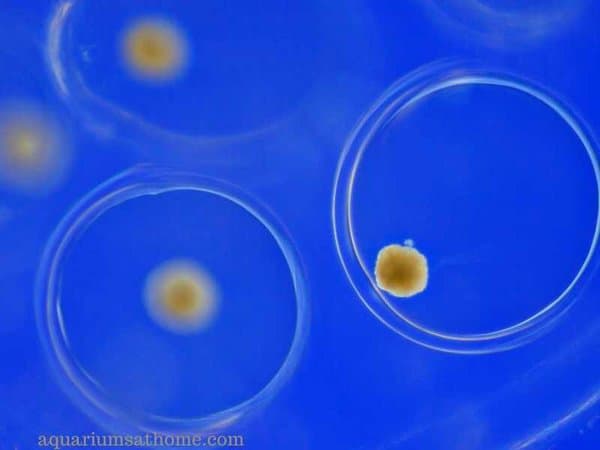
Dispose of Eggs Before they Hatch
If you have an aquarium with herbivorous fish, the best thing to do is dispose of the eggs as quickly as possible, preferably before they hatch. Plant-eating fish won’t bother with snails and an infestation in a freshwater tank is not only a nuisance but difficult to manage as well.
To help control snail populations, consider immersing aquarium decorations in a snail-killing solution before adding them to your tank. Dipping artificial plants, rocks, driftwood, etc. into a bleach solution will kill both snails and their eggs. To make the liquid, simply add ¾ cup bleach to a gallon of water.
Don’t dip live plants into the bleach solution as you’ll likely kill them. Also, make sure you rinse the decorations thoroughly before adding them to the tank to guarantee all traces of bleach have been removed. If not, you run the risk of altering the water parameters and/or toxifying your aquarium.
Final Thoughts
To conclude, there are 3 things you can do with snail eggs in a freshwater aquarium, depending on your needs as an aquarist: allow them to hatch and keep them, use them to feed your pet fish, or dispose of them immediately. The size of your tank and the types of fish will also impact your decision.
I trust this article has been of help in answering your questions regarding snail eggs in your fish tank and what to do with them. Thanks for reading and good luck with your aquarium hobby.
Recommended Posts
Freshwater Aquarium Snails Care For the Beginner
Shrimp Like Creatures in My Fish Tank (How to Get Rid of Scuds)
How to Keep Your Fish Tank Clean Without Changing the Water?



